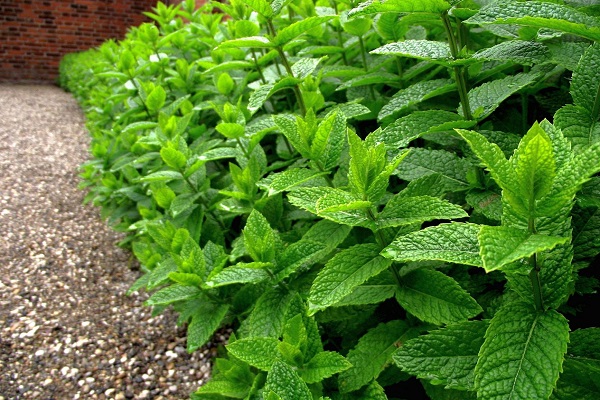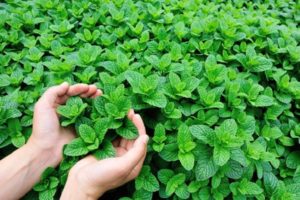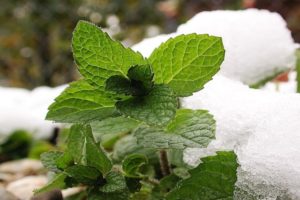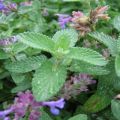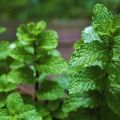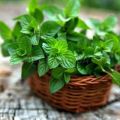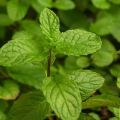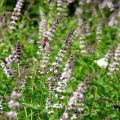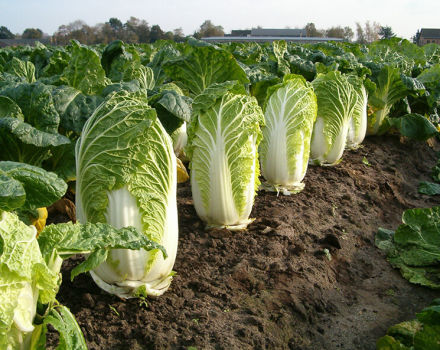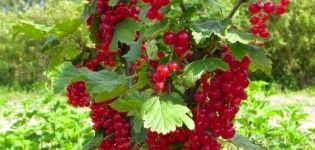Description of the variety of curly mint, features of cultivation and care
Curly mint is most often found in summer cottages. The plant is unpretentious and does not require special attention. On the basis of the leaves of the culture, herbal teas and preparations are prepared.
Features of the variety
Curly mint got its name from the shape of the leaves. They look like curls. Unlike peppermint, the aroma of this variety is not as strong. The leaves smell nice, but the smell is unobtrusive, menthol. The plant reaches a height of 30 cm to 1 m. The shade of the petals is light green. With the onset of the flowering period, the variety throws out inflorescences. The tea stems are collected with the flowers.
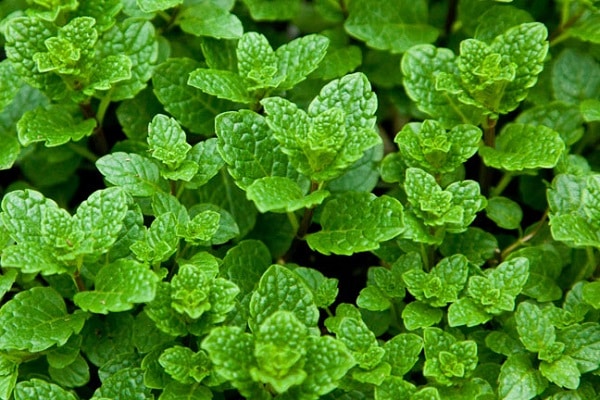
Growing conditions for curly mint
The variety prefers to grow in open sunny areas. It is advisable to choose such places so that the plants are in the sun in the first half of the day. Preference should be given to moist soils, but not wetlands.
It is recommended that the soil be fertile, loose, with good aeration. Loamy and sandy loam substrates are suitable. It is undesirable to plant bushes in the shade. They will grow poorly. Every 4 years, the beds are transplanted, and large bushes are planted in different areas.
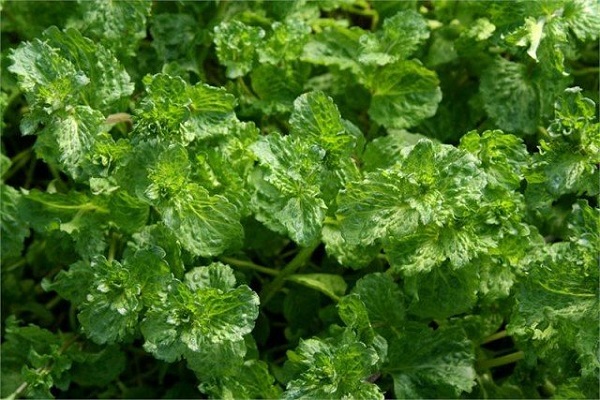
Landing dates
The optimal planting time is mid-spring. This is the second half of April - the first half of May. In cold regions, planting is postponed until the onset of heat. Planting mint in summer is not recommended. Over the summer, it will not have time to take root in a new place, and in the winter it will most likely die.
Autumn planting is undesirable for the same reason. As a last resort, you need to finish planting the mint before August. And with the onset of frost, cover the beds.
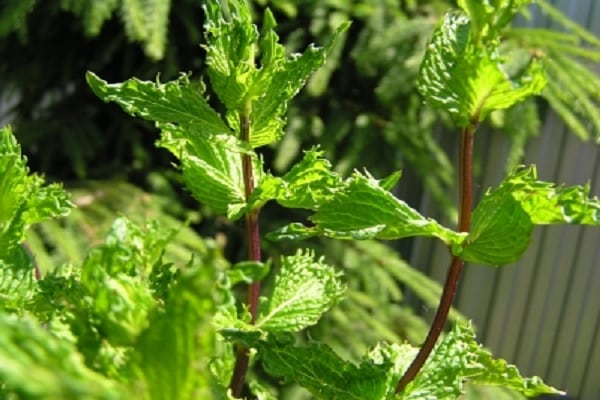
Seedling preparation
Curly mint is grown in several ways.
- grafting;
- seeds;
- seedling.
The most laborious and ineffective cultivation method is seed. They often do not grow well and require increased attention.
You need to give preference to cuttings or seedlings.

To get mint seedlings, they are purchased in garden stores or grown independently:
- To grow seedlings from the mint bush, the stem is cut off at the base of the root.
- They put it in water. After a few days, thin white roots appear.
- When they grow up, the seedlings are planted in the soil in separate cups.
After the seedlings have taken root and got stronger, they are transplanted together with the soil to a permanent place.
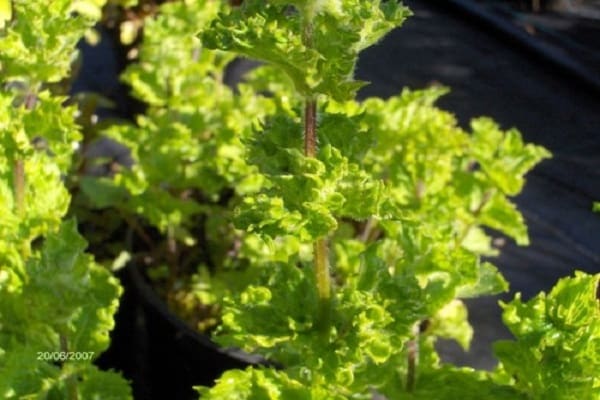
Site preparation
They begin to prepare the site for planting curly mint in the fall. With the onset of autumn, all weeds are removed, and the soil is dug to a depth of 10-15 cm.This will prevent insects from appearing in the spring. In addition, the soil is watered with a solution of potassium permanganate or iodine. Such disinfection is the prevention of fungi and other diseases.
In the spring, the soil is dug up again and fertilizers are applied. Use mineral and organic feed. Manure, bird droppings, mullein, superphosphate and nitrogen fertilizers are suitable.

Planting a plant
To grow mint by seed, the material is first germinated. To do this, it is placed in moist gauze and left for several days. When the shoots appear, they are transplanted into the soil and sprinkled with a little earth. Boxes with seeds are wrapped with cling film, left in this form for 1-2 weeks. The film is periodically removed. This is to check if mold has appeared on the soil. And water the soil. After the sprouts appear, the film is removed.
It is necessary to transplant seedlings to a permanent place when the first few pairs of full-fledged leaves appear on the bushes.
Another way is grafting. Part of the bush is cut off with a shovel and, together with the soil, planted in a new place. Then it is added with soil and poured abundantly with warm water. This method is considered the simplest, and the bushes take root faster than with other planting methods.
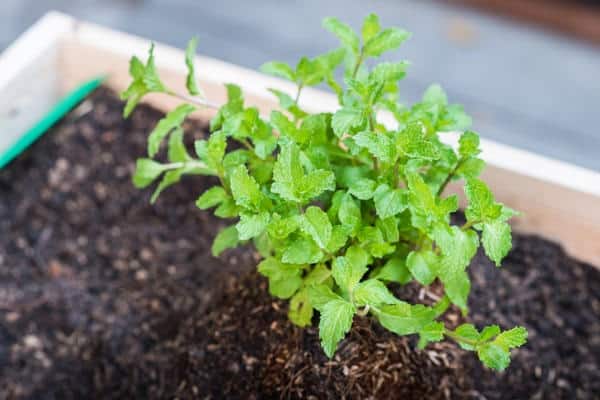
Before planting bushes with white roots, holes are dug in the soil and fertilizer is poured into the bottom. Place the stem in the hole and cover with soil. Lightly tamp the soil on top and watered.
General rules for crop care
Curly mint, like other plant varieties, is unpretentious. Bushes can grow on any soil. The only maintenance condition is that when grown in cold regions, the beds are insulated for the winter. Mint is afraid of frost and often freezes in cold winters.
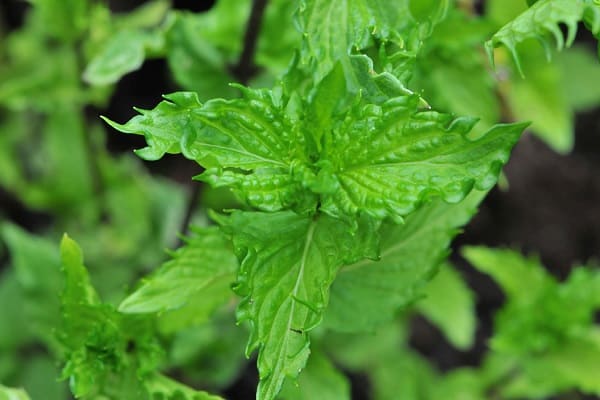
How to water mint
You need to water the bushes several times a week. Mint prefers to grow on moist soil. But it is undesirable to pour the earth so that the plants do not start to hurt. If the heat is intense, the amount of watering is increased. By the appearance of the bushes, it will be clear if they need additional moisture.
Weeding and loosening
The plant does not need frequent weeding. It is necessary to loosen the soil only if the beds are heavily overgrown with weeds and interfere with the growth of mint. You will also have to weed the beds if the plantings are very thickened, and some of the bushes need to be transplanted to a new place.

Diseases and pests of mint
Most often, flea, aphids, leaf beetles and ticks appear on curly mint. Insects feed on mint juice, from which the plant begins to wilt, and the bushes gradually die. It is necessary to destroy harmful insects immediately after their appearance. The chemicals used are Karbofos or other insect herbicides.
Among diseases, mint is affected by powdery mildew and rust. Spraying with soap or soda solution helps with powdery mildew. And if the bushes are affected by rust, then they need to be dug up and destroyed away from the site. The beds are then treated with potassium permanganate. To prevent diseases, it is necessary to prevent waterlogging and thickening of the beds.
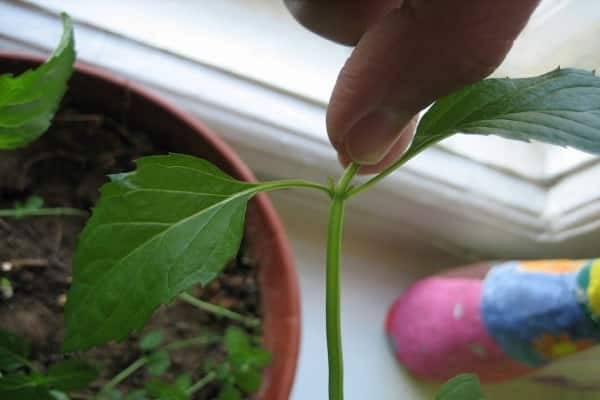
Harvesting and storage
Harvesting mint begins when the stems of the plant have reached a height of 20-30 cm. Starting from the first half of June, the stems are already cut. The cut is carried out until the very fall. The more often you cut the stems, the thicker they will grow.
Dried mint in a cool dark room, stirring occasionally. After the stems and leaves are completely dry, they are transferred to glass jars or cloth bags. Store raw materials away from sunlight.
